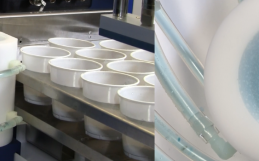The following tables summarize the impact of a range of common inorganic anions and cations on the determination of COD using the PeCOD® technique. You can download this FAQ as a pdf document at this link.
For each inorganic species, solutions containing 0, 20, 50, 100, 250, 500 ppm (by mass) of the anion or cation, 60ppm COD (as sorbitol) and 1M LiNO3 (containing 20ppm COD spike) were prepared and analyzed, unless otherwise stated. Therefore, the below ion concentrations represent the concentration IN THE CELL (i.e. if analyzed in a different range, the interference levels may vary due to different electrolyte dilution effects).
| Anions | Formula | Remark |
| Ammonium | NH4+ | No interference for NH4+ ≤ 500 ppm
Note: Similar results are obtained for Ammonia |
| Carbonate | CO32- | No interference for CO32- ≤ 500ppm using chloride resistant sensor |
| Chlorate | ClO3– | No interference for ClO3– ≤ 500ppm |
| Chloride | Cl– | Chloride ions interfere with COD readings in concentrations greater than 200mg/L. The COD is expected to be reduced by up to 20% when levels exceed 500mg/L.
Samples with high chloride concentrations can still be run on the PeCOD. The allowable chloride concentration of the sample varies depending on the COD range being run on the PeCOD. When diluting a sample to be within the acceptable chloride concentrations, the dilution must occur prior to mixing with electrolyte. The different allowable Chloride ion concentrations are:
Other halides like fluoride, bromide, and iodide are expected to have similar concentrations and interference behaviours. |
| Nitrate | NO3– | No interference, NO3– can be used as PeCOD electrolyte |
| Nitrite | NO2– | No interference for NO2– ≤ 500ppm |
| Perchlorate | ClO4– | No interference, ClO4– can be used as PeCOD electrolyte |
| Phosphate | PO43- | No interference for PO43- ≤ 500ppm |
| Sulfate | SO42- | No interference for SO42- ≤ 500ppm |
| Sulfite | SO32- | Interference for SO3 ≥ 20 ppm, giving COD high by 90% at 250 ppm SO32- |
| Sulfide | S2- | Interference for S2- > 0 ppm, giving COD high by >100% at 50 ppm S2- |
| Cations | Formula | Remark |
| Aluminum | Al3+ | No interference for Al3+ ≤ 500ppm |
| Calcium | Ca2+ | No interference for Ca2+ ≤ 500ppm |
| Chromate | Cr3+ | Interference for Cr3+ > 2 ppm, giving low COD |
| Ferric Iron | Fe3+ | No interference for Fe3+ ≤ 500ppm |
| Ferrous Iron | Fe2+ | Interference for Fe2+ > 100 ppm, giving low COD |
| Magnesium | Mg2+ | No interference for Mg2+ ≤ 500ppm |
| Potassium | K+ | No interference for K+ ≤ 500ppm |
| Silver | Ag+ | Interference for Ag+ > 10 ppm, giving low COD |
| Sodium | Na+ | No interference for Na+ ≤ 500ppm |
| Zinc | Zn2+ | No interference for Zn2+ ≤ 500ppm |



